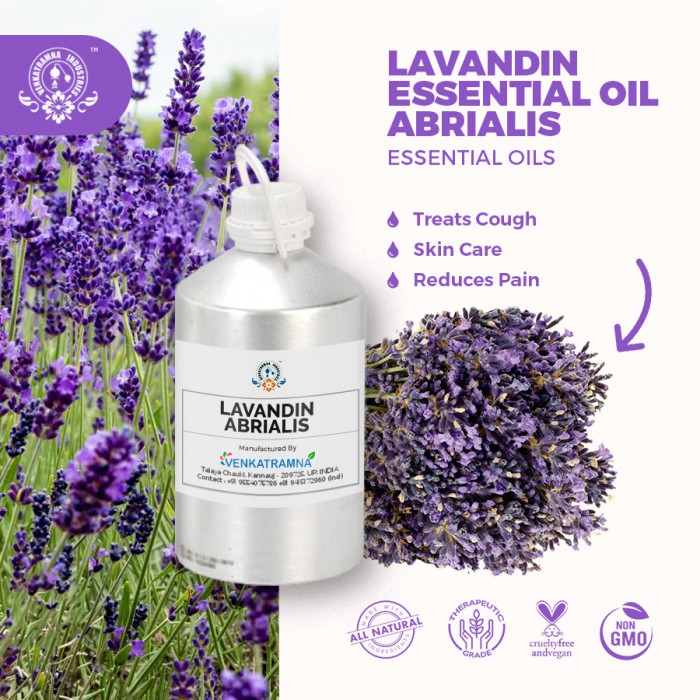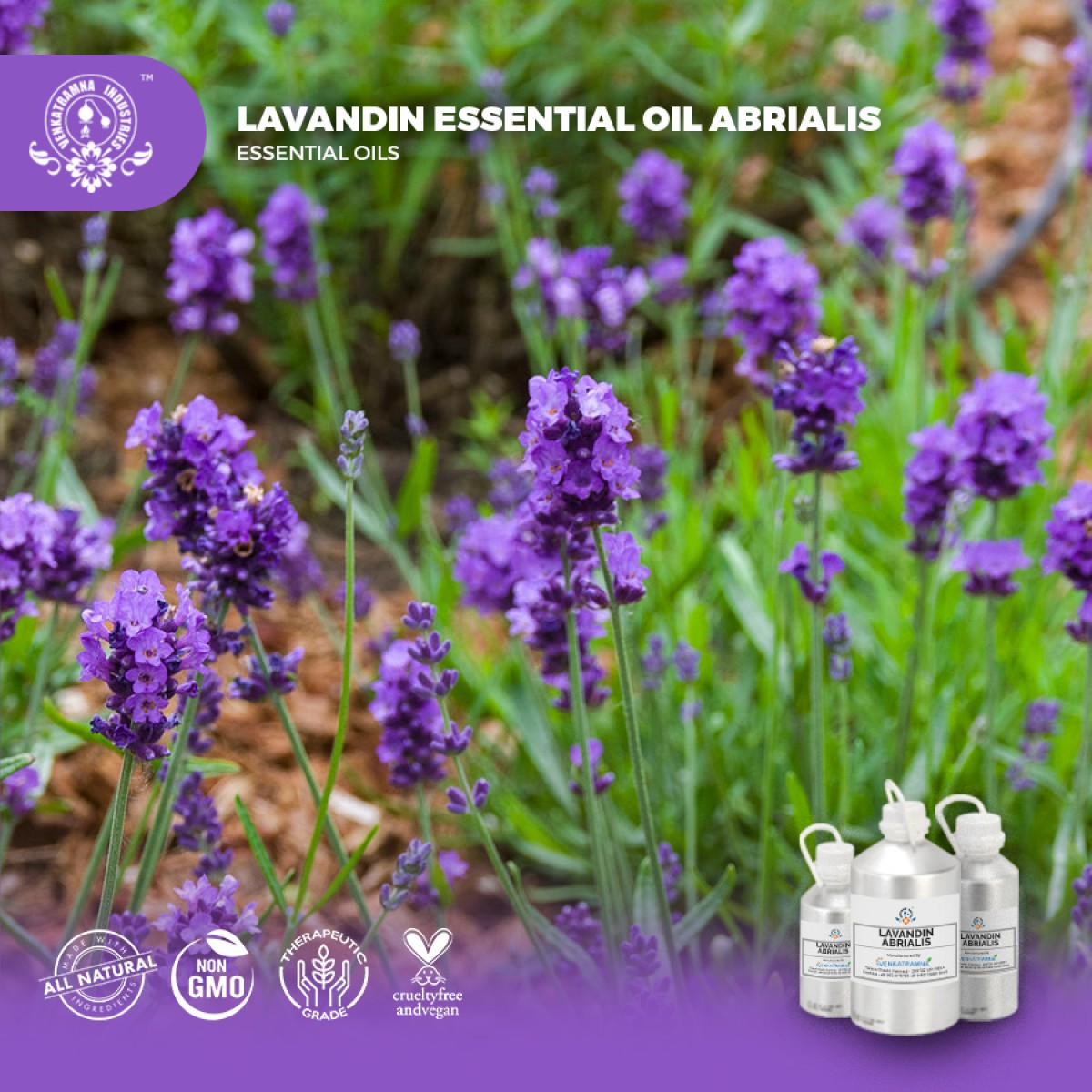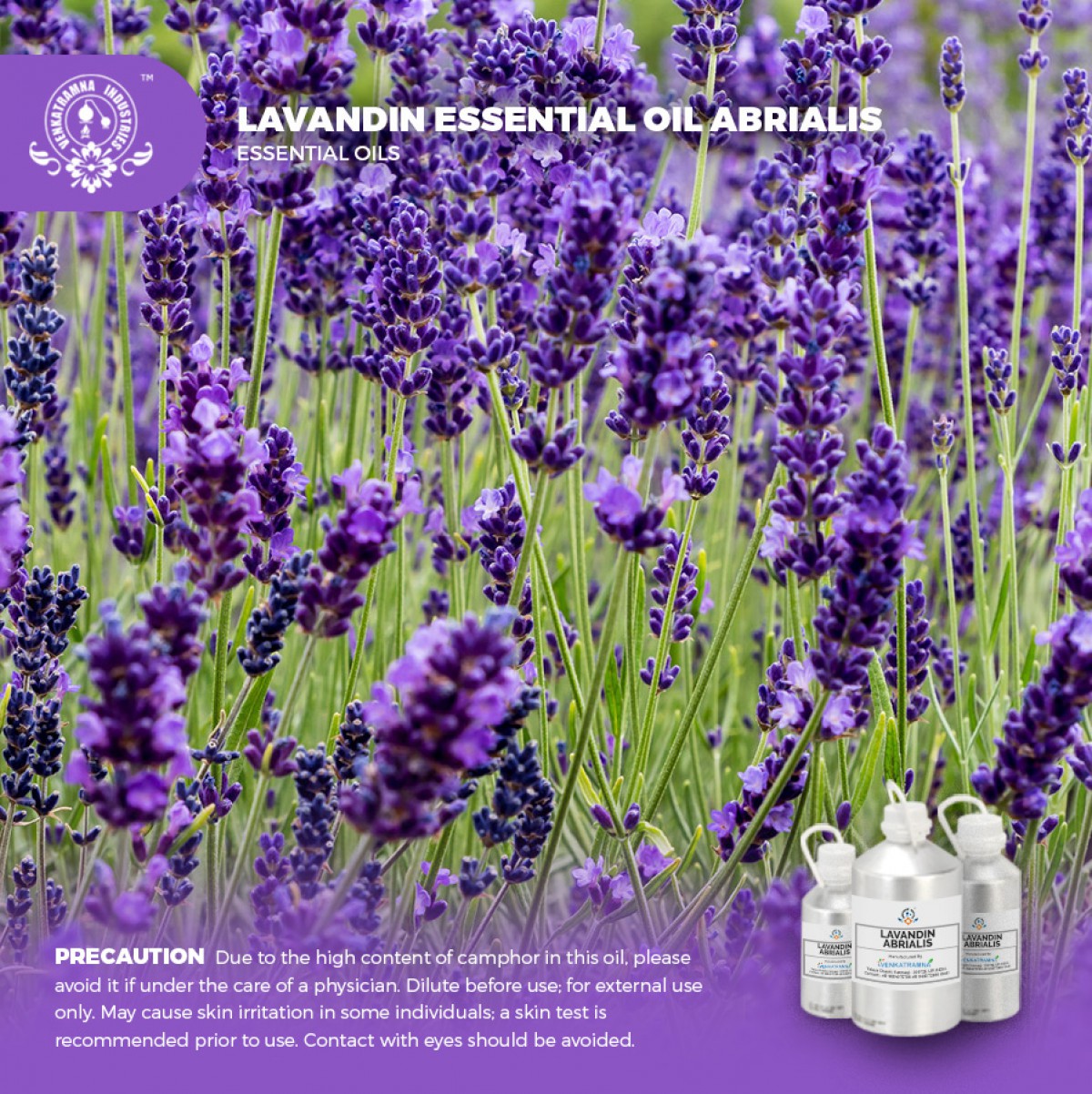Botanical Name: Lavandula hybrida var. abrial Common name: Lavandin P Read More
|
Botanical Name: |
Lavandula hybrida var. abrial |
|
Common name: |
Lavandin |
|
Plant
family: |
Lamiaceae |
|
Genus: |
Lavandula |
|
Appearance/Color: |
A thin, clear,
pale yellow liquid. |
|
Odor: |
A top note with a
strong aroma, Lavandin Oil has a strong, somewhat piercing, camphor-like
smell with some light, floral undertones characteristic of Lavender. |
|
Blends With: |
essential oils
of Bergamot, Citronella, Lemongrass, Cinnamon, Rosemary, Pinem, Jasmine,
Thyme and Patchouli. |
|
Origin: |
France |
|
Source: |
Flower |
|
Method
of Extraction: |
Steam Distillation |
Lavandin is an aromatic evergreen
shrub that is much larger than true Lavender. An evergreen woody shrub growing
to 3 feet high with green, narrow, linear leaves producing violet-blue flowers,
the entire plant is covered with oil glands, which are in the star-shaped hairs
that cover the plant. The flowering heads are more compressed with a dull, gray
blue color. This hybrid apparently evolved naturally near the seas in Spain,
Italy and France. It is now commercially produced in these same countries.
Lavandin is used almost exclusively for scent. Many commercial manufacturers
use both Lavandin Grosso and Lavandin Abrialis as replacements for Lavender
40/42, but they have a much rougher, camphorous scent.
Lavandin is the Latin genus
referring to Lavender. There are about 39 different recognized species of this
plant. Countless variations have been produced due to the ability to cross
pollinate with other members in the Lavender spices. Lavandula was thought to
originate in Asia but the greatest plant diversity is found in the western
regions of the world.
Essential oils are produced in the cells of aromatic plants and are held in specialized glands. They are released from the plant and collected (concentrated) most often through steam distillation (and sometimes hydro or water distillation or a combination thereof). Distillation is a method of separating components based on differences in volatile constituents in a heated mixture. Steam distillation involves bubbling steam through the plant material.
DISCLAIMER
The complete range of conditions
or methods of use are beyond our control therefore we do not assume any
responsibility and expressly disclaim any liability for any use of this
product. Information contained herein is believed to be true and accurate however,
all statements or suggestions are made without warranty, expressed or implied,
regarding accuracy of the information, the hazards connected with the use of
the material or the results to be obtained from the use thereof. Compliance
with all applicable federal, state, and local laws and local regulations
remains the responsibility of the user.
The FDA has not evaluated the
statements on this website. No claims are made by Venkatramna Industries as to
the medicinal value of any products from vriaroma.com or by us. The information
presented here is for educating our customers about the traditional uses of
essential oils and is not intended to diagnose, treat, cure, or prevent any
disease. You are responsible for understanding the safe application of these products.
If you have any questions, please call or email us for further information.
As per NAHA guidelines, New Directions Aromatics
(NDA) does not recommend the ingestion of essential oils. It is imperative to
consult a medical practitioner before using Essential Oils for therapeutic
purposes. Pregnant and nursing women and those taking prescription drugs are
especially advised not to use this product without the medical advice of a
physician. The oil should always be stored in an area that is inaccessible to
children, especially those under the age of 7.
Lavandin Essential Oil contains high levels of camphor which make
it a powerful expectorant. To this end, Lavandin Oil is a natural
treatment for the respiratory system to help clear congestion and excess
phlegm. It is particularly effective for bronchitis, sinusitis and otitis.
Lavandin Oil acts as a tonic for the nerves and the nervous system, strengthening and activating it. Its power as a nervine agent helps to improve signs of shaking hands and limbs, nervousness and even vertigo. It has rich antiseptic properties that can treat wounds.
Lavandin Essential Oil’s intoxicating aroma can effectively boost self-esteem,
confidence, hope and mental strength, working together to combat symptoms of
depression. It is an analgesic reduce pain and inflammation. Whether it’s pain
in the muscles or joints, toothache, headache, coughs, colds or
fevers, Lavandin Oil provides natural pain relief for your ailments.
COMMON
USAGE
·
Wound healing
·
Cures Nervous Disorders
·
Treats Cough Skin Care
·
Reduces Pain
·
Prevents Infections
·
Fights Depression
Ingredients:
|
S.No |
Key Constituents |
Strength (%) |
|
1 |
Linalool |
30.0–38.0 |
|
2 |
Linalyl acetate |
20.0–30.0 |
|
3 |
Camphor |
7.0–11.0 |
|
4 |
1,8-Cineole |
6.0–11.0 |
|
5 |
(E)-b-Ocimene |
3.0–7.0 |
|
6 |
Borneol |
2.0–4.0 |
|
7 |
(Z)-b-Ocimene |
1.5–4.0 |
|
8 |
Lavandulyl acetate |
1.0–2.0 |
|
9 |
Lavandulol |
0.5–1.5 |
|
10 |
Terpinen-4-ol |
<1.0 |
Safety summary
·
Hazards: Drug interaction; may inhibit
blood clotting
·
Cautions: (oral) Anticoagulant
medication, major surgery, peptic ulcer, hemophilia, other bleeding disorders.
·
Regulatory guidelines
Has GRAS status. According
to IFRA, essential oils rich in linalool should only be used when the level of
peroxides is kept to the lowest practical value. The addition of antioxidants
such as 0.1% BHT or a-tocopherol at the time of production is recommended.
Organ-specific effects
·
Adverse skin reactions: Undiluted lavandin oil
(type unspecified) was slightly irritating to rabbits, but was not irritating
to mice or pigs; tested at 5% on 25 volunteers it was neither irritating nor
sensitizing. It is non-phototoxic.
·
Cardiovascular effects: Lavandin Grosso oil
inhibited platelet aggregation induced by arachidonic acid oil inhibited platelet
aggregation induced by arachidonic acid, U46619, collagen and ADP, with IC50
values of 51, 84, 191 and 640 mg/mL, respectively.
Systemic effects
·
Acute toxicity: Lavandin oil acute
oral LD50 in rats >5 g/kg; acute dermal LD50 in rabbits >5 g/kg.
·
Carcinogenic/anticarcinogenic potential: No
information was found for lavandin oil, but it contains no known carcinogens.
·
Drug interactions: Anticoagulant medication, because of
cardiovascular effects, above
Comments
Abrialis and Grosso are the two
principal cultivars of lavandin grown for essential oil production. Lavandin
abrialis has the highest 1,8-cineole content, lavandin Super is the
sweetest and most similar to the oil from Lavandula angustifolia, and
Grosso has the highest essential oil yield. Lavandin is the natural and
artificial hybrid of Lavandula angustifolia and Lavandula latifolia.
·
Ecotoxicity: Harmful to aquatic life. May have
long lasting effects.
·
Toxicity to aquatic plants – No data available
·
Toxicity to microorganisms – No data available
·
Toxicity threshold – No data available
·
Bioaccumulation: No data available
·
Mobility in soil: No data available
·
Persistence and degradability: No data available
·
PBT and vPvB assessment: No data available





 MSDS-Lavender.pdf
MSDS-Lavender.pdf




